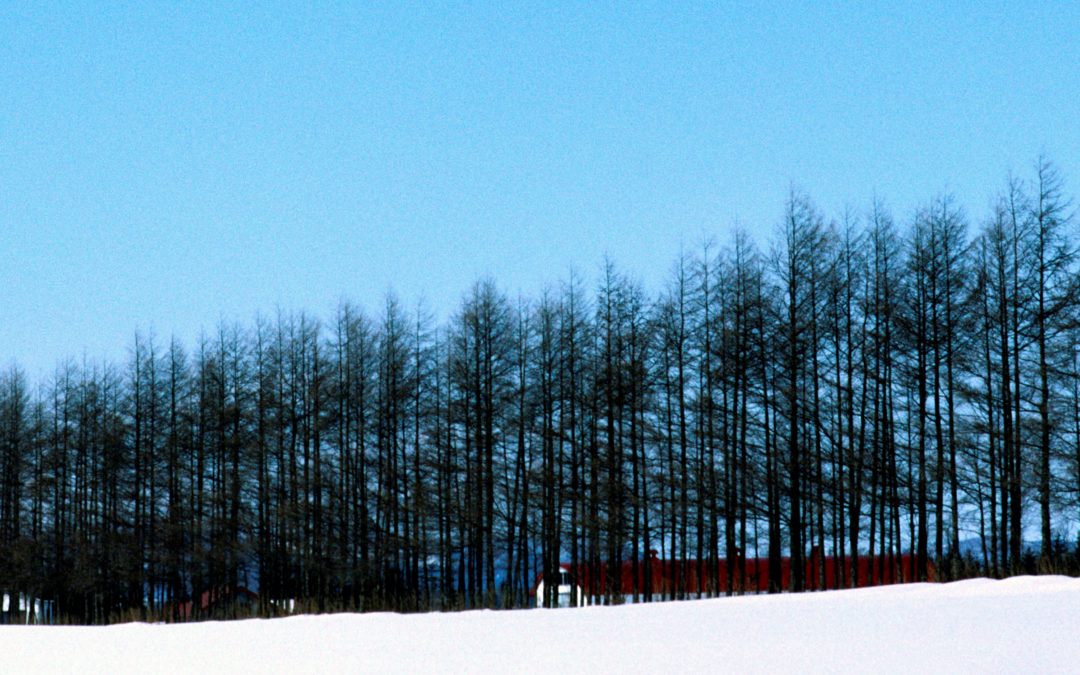Windbreaks are dense rows of trees and shrubs designed to reduce wind speed before it reaches a home.
These landscape elements provide numerous other perks for the homeowner, their neighborhood and the environment.
Some of the advantages provided by windbreaks, beyond simple wind mitigation, include the following:
- A properly-designed windbreak protects a house
- Many animals rely on windbreaks. Food, shelter from severe weather, nesting sites, and a means of escape cover are all provided by the vegetation that composes a windbreak. Birds, in particular, are known to rely on windbreaks for temporary cover during winter storms. Even large mammals, such as white-tailed deer, use windbreaks for cover, food and fawning. Employ a variety of trees and shrubs in your windbreak to create an abundance of different kinds of nuts, seeds and berries, which will, in turn, attract a diversity of wildlife.
- While any vegetation will increase the appeal of an otherwise barren yard, a uniform, well-maintained windbreak can increase property values with their pleasing aesthetics.
- Windbreaks are effective for noise deflection. Windbreaks reduce the infiltration of traffic noise into a property by absorbing and deflecting it with leaves and large branches. In addition, traffic noises will be replaced with the sounds of rustling leaves or the singing of birds that are drawn to the vegetation.
- Windbreaks provide snow control. A properly placed windbreak will prevent snow drifts in areas such as driveways and building entrances. Valuable time and effort can then be spent on activities other than snow removal.
The best windbreaks block wind close to the ground by using fast-growing trees and shrubs that have low crowns. Deciduous trees, while they are favored as shade trees during the summer, lose their leaves in cold weather, which makes them less effective than evergreens at stopping the frigid winter wind. The best choices are dense, fat, fast-growing conifers that will mature to a height higher than the roof. These qualities may be found with Norway and Colorado blue spruce.
Tips from Peter Young with Peter Young Home Inspections:
- For maximum protection, plant your windbreak at a distance from your home of three to five times the height of the mature trees. Studies have shown, however, that the effective distance of wind reduction is sometimes as high as 30 times the height of the windbreak, depending on the tree species.
- Do not plant trees too close to the home’s south side, as this will reduce the warmth supplied by the winter sun.
- Arrange windbreaks in multiple rows to increase their effectiveness.
- Do not prune the lower branches of the windbreak, as this will increase the wind speed near the ground.
- Thin the trees and shrubs as they grow to ensure that competition does not jeopardize the health of the windbreak. For instance, you can plant trees 3 feet apart, but then you should remove every second tree when their crowns begin to intersect.
- Incorporate numerous plant species in the windbreak to impede wind from ground level to the treetops. Even non-living yard features, such as walls, fences and raised soils, can be incorporated into a single windbreak.
- Determine which direction the prevailing winds come from in your area so you know where the best places are to plant the windbreak.
- Be careful to not plant large trees too close to the home, as they may fall during a storm, shed leaves or needles on your roof, allow pests to access your roof, or even penetrate your basement walls with their root structure. If you are experiencing any of these conditions, be sure to contact a certified arborist.
For any questions you may have, please do not hesitate to contact Peter Young.
